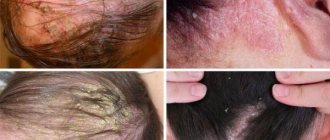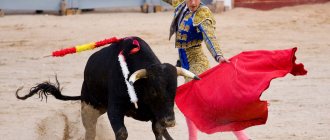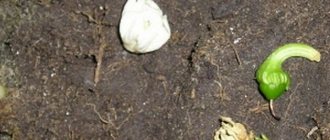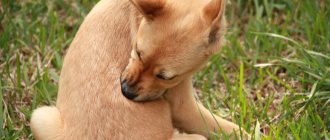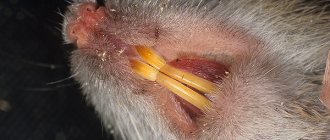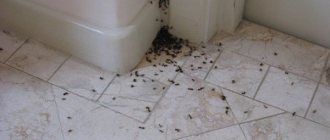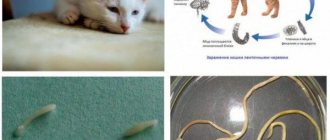The comb (comb) of chickens and roosters is an organ that is not only an attribute of decoration. It also performs two functions - physiological and diagnostic. Any changes in its color are a signal to the farmer that the bird is unhealthy. This is the general answer to the question why a rooster's comb turns blue or black. But there are nuances.
The comb of representatives of the pheasant family, which includes chickens, is a growth on the axial part of the head, formed from integumentary tissue. As the individual becomes sexually mature, its comb increases in size and acquires a beautiful red color. Its size and brightness of color depend on the breed, but in any case, in roosters it will always be somewhat larger and brighter than in chickens.
Causes of blackening and swelling of the comb in chickens and roosters
It is almost impossible to clearly name the reason for the darkening of the comb in poultry. To do this, it is necessary to analyze the behavior, appearance, nutrition and living conditions of the chicken or rooster. The reason for a change in the color of the comb can also be a serious infectious disease of chickens, which threatens the entire population of birds. Therefore, it is necessary to determine the cause of the blackening of the ridge as early as possible and begin appropriate treatment. Perhaps only a veterinarian can help with this difficult matter.
A list of diseases common to chickens and roosters, a characteristic sign of which is a change in the color of the comb:
- avitaminosis;
- pasteurellosis (cholera);
- bird flu;
- frostbite.
Avitaminosis
The disease most often affects adults kept in cages, since they do not eat natural food. Vitamin deficiency develops due to a lack of vitamins or minerals.
Symptoms:
- the comb and earrings turn black or pale;
- poultry weight loss;
- lethargy, general weakness;
- feather loss;
- swelling of the paw joints;
- exhaustion and dehydration;
- birds can take uncharacteristic poses, throw their heads back;
- decreased egg production in chickens and reproductive function in roosters;
- against the background of vitamin deficiency, eye diseases occur (for example, conjunctivitis), sometimes leading to complete blindness.
For treatment, it is necessary to introduce cake, herbal flour, chalk, zucchini, and brewer's yeast into the diet. You also need to give poultry only special balanced food with vitamins and minerals.
It is necessary to monitor the composition of feed, since some types of fish (it is added in the form of bone meal) lead to the destruction of vitamin B1 (thiamine) in the body of chickens.
Helminth of the cecum
Helminths of the cecum, parasitizing in the body of birds, cause inflammatory processes in the cecum and slow down the growth of young animals. In addition, this helminth is the host of protozoan pathogens that cause enterohepatitis (“black head”) in chickens and turkeys.
Cleanliness of walking areas, their alternation and digging up the soil on walking areas after being freed from birds, as well as keeping adult birds and young animals separately, usually prevent mass infection by helminths.
An effective remedy against cecal helminths is phenothiazine, which is fed to birds along with food.
Pasteurellosis (cholera)
The causative agent of this disease is a virus, so pasteurellosis can destroy the entire poultry house in a short period of time. The infection is transmitted by airborne droplets, water and food. The disease affects both young and adult animals.
Pasteurellosis is often a consequence of insufficient disinfection of the premises, contact of poultry with stray and wild animals.
- darkening of the comb and earrings;
- temperature increase;
- wheezing, mucus discharge from the nostrils and sometimes the mouth;
- loose, foamy stools;
- thirst and refusal to eat;
It is necessary to begin treatment of the bird on the very first day of the disease, and preferably in the first hours, since in this case there is a greater chance of success.
First, you need to isolate the sick animal until it recovers. For treatment, veterinarians advise using strong antibiotics. Typically, a solution of tetracycline (2%) or norsulfazole is used (dosage half a gram at a time). Sulfa drugs are also effective, for example, sulfamethazine in a dosage of one-tenth of a percent of water and one-half of a percent of food. Treatment lasts for 10-14 days.
After removing a sick animal, it is necessary to disinfect and ventilate the entire chicken coop, since the infection can persist in the air, litter or feathers of the sick bird.
Usually it is recommended to whitewash the walls of the chicken coop with lime and spray smoke bombs in the room itself. If the bird is not cured and dies, then its body must be burned, since the virus persists for a long period in the animal’s corpse. Cured and healthy chickens and roosters are given greens, vitamins and minerals for prevention.
Contact of birds with the main vectors of pasteurellosis (rodents are their role) must be minimized. To avoid infection, chickens are vaccinated at an early age with a special anti-cholera serum. This way you don’t have to worry that the entire poultry house will be destroyed by a viral disease.
Experienced poultry farmers advise
If a chicken breaks its leg
In case of injuries, a distinction is made between open (bone protruding) and closed fractures.
Required:
- Straighten the bones.
- Disinfect the wound.
- Apply a splint.
- Bandage it.
- Cut off the feather.
The chicken broke its leg
If the wing is broken
In case of dislocation (the injured area is swollen and reddish) and incomplete fracture of the wing, the injury area is tightly bandaged. When a chicken has a broken wing, you will need to bandage it to the body. The hen will not be able to move it, causing herself pain and making recovery difficult.
The bird is restrained from moving until it recovers. It is advisable to organize separate content. Similar injuries heal within 2 or 3 weeks.
If the skin of the neck is injured
At times, wounds appear when other animals inflict injuries.
Necessary:
- Cleansing the wound.
- Cleaning feathers near the injured area.
- Washing with potassium permanganate.
- Lubrication with iodine.
- Stitching.
- Bandaging.
- Laying out the chicken.
- Reprocessing and bandaging.
- Removing stitches when the wound is overgrown.
Bird flu
The disease affects the gastrointestinal tract and respiratory organs. The disease occurs only in acute form and is quickly transmitted to the entire herd. Bird flu only affects adults over three weeks of age; small chicks cannot contract the disease.
The avian influenza virus (strain H5N1) is capable of mutations, so it can even be transmitted to humans.
Symptoms:
- darkening of the comb and earrings of birds;
- general weakness and drowsiness;
- loose, foamy stools;
- difficulty breathing (wheezing);
- slimy discharge from the nostrils and mouth;
- lack of appetite with increased thirst;
- unsteadiness when walking, falls, positions uncharacteristic for chickens (collapsed head, throwing it back);
- inactivity, the bird being in a sitting position, ruffled;
- increased body temperature;
- convulsions.
The disease is incurable , which means that the only way out of the situation after an accurate diagnosis (preferably by a veterinarian) is to destroy the diseased birds. The corpses must be cremated or buried away from the chicken coop, covered with quicklime on top.
After the destruction of diseased individuals, the chicken coop and equipment are disinfected with a three percent chloramine solution. Bird's nests are treated with lime 2 times with an interval of two hours. Healthy birds are given interferon for prevention (other medications with an antiviral effect are also possible). However, people with weakened immune systems, the elderly and children need to stay away from the chicken coop to avoid becoming infected from the birds.
Diagnosis of felon
The diagnosis is made based on the patient’s complaints and clinical symptoms of the disease. To determine the shape of the panaritium and clarify the localization of the abscess, palpation is performed with a button probe.
To exclude bone and articular panaritium, radiography is performed. It should be taken into account that, unlike bone panaritium, in the articular form of the disease, changes are not immediately detected and may be mildly expressed. Therefore, to clarify the diagnosis, comparative radiographs of the healthy finger of the same name on the other hand should be prescribed.
Frostbite
A rooster or chicken can freeze its comb, earrings or paws while walking in the cold or when the chicken coop is not heated properly. It must be remembered that if you do not promptly provide the animal with a place in a warm room and do not begin treatment, this will lead to the loss of a frostbitten limb. Frostbite on the comb will not affect the reproductive ability of the rooster or the egg production of the hen. If frostbite is severe, the ridge may swell.
The comb is treated with medical alcohol and lubricated with a layer of Vaseline. You can also use a mixture of turpentine and goose fat (taken in a ratio of 1:10).
Wound infection
Roosters usually fight, and one of the reasons for the blackening of the comb may be an infection that has entered the blood through wounds. Sometimes the scallop also swells.
The comb is disinfected with potassium permanganate or three percent hydrogen peroxide. The bird is moved to a separate room for the duration of treatment until the scallop is completely healed.
What symptoms indicate the development of tuberculosis in chickens? This is discussed in detail here.
Ponom in chickens can be cured with folk remedies. You can find out which substances should be used here.
Diagnosis of suspected brain tumor
Even a general or biochemical blood test can indirectly indicate the presence of a tumor. However, if there is a suspicion of a neoplasm, more accurate tests and studies are prescribed:
- electroencephalography will show the presence of tumors and foci of convulsive activity of the cerebral cortex;
- MRI of the brain will show foci of inflammation, the condition of blood vessels and the smallest structural changes in the brain;
- A CT scan of the brain, especially with the use of contrast fluid, will help determine the boundaries of the lesion;
- analysis of cerebrospinal fluid - fluid from the ventricles of the brain - will show the amount of protein, cell composition and acidity;
- examination of the cerebrospinal fluid for the presence of cancer cells;
- A biopsy of the tumor will help determine whether it is benign or malignant.
Newcastle disease (pseudoplague)
The disease is infectious, which means it quickly affects the entire flock of birds. Newcastle disease affects the internal organs, respiratory and nervous systems. The carriers of pseudoplague are wild birds, and it is transmitted by airborne droplets and through water and food.
Symptoms:
- blackening of the comb, earrings;
- diarrhea;
- convulsions, neck twisting;
- lack of appetite and thirst;
- viscous mucus flows from the beak;
- difficulty breathing.
Sick chickens should be slaughtered as early as possible.
After destroying sick individuals, it is necessary to disinfect the chicken coop. There is also a vaccination against pseudoplague that can protect chickens.
Why does a rooster's comb turn black?
An indicator of the health of chickens is the condition of their combs. A good rooster or hen has a bright red head growth. A different palette is a warning sign. Why? Darkening of the leathery growth on the head indicates stagnation of blood followed by necrosis. At first the comb turns blue, but the color change process does not end there. This article informs amateur poultry farmers in what cases a rooster's comb turns black and what to do if this happens.
The first cerebral symptoms of a tumor
When the second stage of the disease develops, the meninges are excited and intracranial pressure increases. As a result, cerebral changes occur.
The tumor puts pressure on the brain, affecting its functioning.
At this time, the treatment is still successful, but it takes longer and is more difficult. The symptoms of the second stage are no longer so easily confused with the symptoms of other diseases:
- sensitivity is lost in certain areas of the body;
- sudden dizziness occurs;
- muscles weaken, often on one side of the body;
- severe fatigue and drowsiness sets in;
- seeing double.
At the same time, my general health deteriorates and morning sickness continues. All this manifests itself in the patient regardless of what part of the brain the tumor is located in.
However, it is still possible to confuse the symptoms - they are approximately the same as with epilepsy, neuropathy or hypotension. So if you find yourself with these symptoms, do not rush to panic. But be sure to go to the doctor - the unknown has never been good for anyone. And such symptoms should not be joked about.
Causes
The comb darkens in adult chickens for the following reasons:
- Bird flu.
- Pasteurellosis.
- Newcastle disease
- Frostbite.
Bird flu
An acute disease that can affect the entire herd. It occurs mainly in manifest form. The rooster's comb turns black due to the death of the skin. There is no treatment for influenza in chickens.
Bird flu occurs with the following symptoms:
- Stopping feeding.
- Untidy plumage.
- Diarrhea develops.
- Mucous membranes swell.
- Mucus flows from the slightly open beak.
- The comb and earrings turn blue, then turn black.
- The bird wheezes and suffocates.
- At the onset of the disease, the temperature jumps to 44 degrees, and before death it drops below thirty.
The danger of this disease is that people are susceptible to it. The disease is more dangerous for humans than the common flu.
Regional authorities are taking part in eliminating avian influenza. The farm and the locality are quarantined. Sick chickens with blue combs are destroyed without shedding blood. Clinically healthy birds are slaughtered in a sanitary slaughterhouse. Service personnel are vaccinated against human influenza. The vaccine does not protect against influenza, but it does reduce its severity. Therefore, people involved in eliminating the disease work in special clothing with special precautions.
Pasteurellosis
The disease occurs mainly in backyard chicken coops. Another name is chicken cholera. Most often, chickens become infected in the spring, during sudden changes in outside temperatures. The disease is transmitted by pigeons, other wild birds, as well as domestic birds. The pathology is dangerous for humans. Pasteurella enters the human body through scratches.
The disease affects chickens, as well as hens before laying eggs. Additional symptoms include green diarrhea and swollen joints. The bird is losing weight. Without any visual changes in appearance, the chicken becomes light. The disease occurs in a chronic or acute form, in which the characteristic symptoms do not have time to develop due to rapid death.
Pasteurellosis can be treated with antibiotics, but a recovered chicken cannot become a good laying hen because the reproductive organs are affected. A reasonable solution is to slaughter individuals with a blackened comb before they become too emaciated. You can eat the meat of sick chicken if you boil it for about 2 hours. Conditionally healthy livestock are treated with antimicrobial drugs. It is difficult to protect birds from contact with disease carriers - sparrows flew in, pecked at the food and brought in pasteurella.
It is better to protect the bird in advance; if there is a threat of infection, use Tromexin.
Trisulfone has a good therapeutic and preventive effect.
Newcastle disease
Pseudoplague is caused by a virus transmitted primarily by air. It is carried by birds of other species, arthropods, mice, rodents, and people over a distance of 15 km. If a personal farm is located near a poultry farm, there is a risk of contracting Newcastle disease.
Pseudoplague is characterized by the following symptoms:
- Diarrhea.
- Twisting of the neck.
- Refusal of food and water.
- The rooster's comb turns black.
- Cramps.
- Wheezing, heavy breathing.
There is no cure for Newcastle disease. The bird is slaughtered without shedding blood, so as not to spread the infection. A farm or community is quarantined. Conditionally healthy individuals are vaccinated. Immunization at a poultry farm is mandatory, and the decision on the need for it in rural chicken coops is made by a veterinarian.
Frostbite
The diagnosis is made easier by the fact that the disease occurs in cold weather. Frostbite can also occur in slightly cold but windy weather. If the bird is not placed in a warm room, part of the comb may be lost. Often, along with skin formations, limbs become frostbitten and may fall off. With timely treatment, even the loss of part of the chicken decoration will not affect the productivity of the laying hen or the activity of the rooster. How to treat a frostbitten surface? It is wiped with an alcohol-containing liquid and periodically lubricated with wound-healing ointments, sprays or Vaseline. Among folk remedies, a popular mixture is made from goose fat with 10/1 turpentine.
Precancerous neoplasms (precancrosis)
Precancerous neoplasms are those that, under the influence of congenital or current causes, have acquired a tendency to malignant degeneration. As a rule, these are chronic conditions that are observed in a person for a long time.
Thus, precancerous tumors are dangerous neoplasms on the skin that can lead to the development of oncological processes. These include:
- Actinic keratoma is a keratosis in which dry crusts and scales appear on the skin of older people. When they peel off, slight bleeding may occur.
- Xeroderma pigmentosum is a hereditary tumor that develops due to increased sensitivity of the skin to ultraviolet radiation. Rarely encountered, these are pigmented spots that become warty growths.
- The cutaneous horn is a cone-shaped tumor that looks like a horn. Has a yellow or brown color. occurs in exposed areas of the body that are regularly subjected to friction or pressure. Typical for older people
- Bowen's disease is an intraepidermal cancer. Without treatment, it can transform into invasive skin cancer. In the early stage, Bowen's disease appears as a small reddish-brown spot measuring 2-50 mm. has a flaky surface and raised, uneven edges. After removing the scales, a weeping but not bleeding surface remains.
The combs of chickens turn black. What is this?
Questions can only be asked after registration. Please login or register.
Help with advice! Chickens are dying en masse in the village. One neighbor has 23 pieces per day. They fall to their feet and their crests turn black, and lie with their eyes closed. A veterinarian came and told me to buy the La Sota vaccine against Newcastle disease. They drank it and had no effect. Until there was a vaccine, we gave enrofloxin-10% 2 ml per 1 liter of water with a syringe directly into the beak, 2 cubes each. A couple more chickens walk around like they’re drunk, turning their heads and staggering. We tried Baycox 2.5% and it seemed to help. What could this be and how to deal with it?
Help with advice! Chickens are dying en masse in the village. One neighbor has 23 pieces per day. They fall to their feet and their crests turn black, and lie with their eyes closed. A veterinarian came and told me to buy the La Sota vaccine against Newcastle disease. They drank it and had no effect. Until there was a vaccine, we gave enrofloxin-10% 2 ml per 1 liter of water with a syringe directly into the beak, 2 cubes each. A couple more chickens walk around like they’re drunk, turning their heads and staggering. We tried Baycox 2.5% and it seemed to help. What could this be and how to deal with it?
I don’t know, maybe I have the same problem - the chickens started sneezing (I suspect that I overcooled them a little) and today I noticed blackness on the ridges, although I haven’t tried to determine it yet - maybe the dirt has stuck to it. But I'm afraid it's not dirt. We don’t have a mass pestilence; the chickens are still feeling fine. So I don’t know what it could be.
What do you both feed your chickens (Marta and Chernets). Suspicion of diathesis (gout).
Help with advice! Chickens are dying en masse in the village. One neighbor has 23 pieces per day. They fall to their feet and their crests turn black, and lie with their eyes closed. A veterinarian came and told me to buy the La Sota vaccine against Newcastle disease. They drank it and had no effect. Until there was a vaccine, we gave enrofloxin-10% 2 ml per 1 liter of water with a syringe directly into the beak, 2 cubes each. A couple more chickens walk around like they’re drunk, turning their heads and staggering. We tried Baycox 2.5% and it seemed to help. What could this be and how to deal with it?
The vaccine does not have a therapeutic effect and will help healthy chickens not to become infected, even after 7 days (after the formation of immunity), and those that were already infected and were in the incubation period or were clinically ill will still die.
the comb turns black, they become blind, and lose orientation. Most likely bird flu. do the analysis! and as quickly as possible.
With similar external manifestations of the disease (black comb, lethargy), an autopsy of a Yurlov rooster revealed calcific deposits on the heart muscle, more precisely, between the heart and the film surrounding it. In this case, the liver has a normal structure, but is the size of a man’s palm. What is this and what causes it? Files: img_59891.jpg
Chickens are dying en masse in the village. One neighbor has 23 pieces per day. They fall to their feet and their crests turn black, and lie with their eyes closed. A veterinarian came and told me to buy the La Sota vaccine against Newcastle disease.
Very similar to pasteurellosis. Naturally, the Newcastle vaccine will not help. In order to cure sick animals, hyperimmune serum against pasteurellosis is administered in a therapeutic dose and one of the antibiotics (terramycin, oxytetracycline, biomycin, chlortetracycline, tetracycline, streptomycin, chloramphenicol), long-acting drugs (dibiomycin, ditetracycline, disreptomidazole, bicillin-3) or more modern ones drugs - enrofloxacin, etc. In hyperacute pasteurellosis, changes in the corpses are usually absent. In some cases, exudate is noted in the cardiac sac, and pinpoint hemorrhages under the epicardium.
Backyard poultry farming can provide both pleasure and food.
Real experience
Hello. I had the same problem as you. The roosters and hens had the same spots on their combs, the hens had few of them and not all of them, but almost all of the roosters had them all over the comb. The roosters also had darker combs. The problem resolved itself after many hours of observing the chickens. It turned out that the black spots/ulcers are just dried wounds!
And roosters have more of them, because they fight more often! and moreover, when a rooster sits on a perch, and hens sit next to him, then very often they begin to peck at the comb and earrings, the rooster may peck the hen (punish) or endure all this and sit quietly until he is covered in blood, here everything depends on the character. The wound then dries up and dried blood remains.
If you smear, for example, brilliant green on the comb or earrings of a rooster, then the chickens will begin to peck at the green spots and as a result, the entire comb will be covered with such ulcers. It’s the same with cream, BUT! If the chickens don’t like the cream to their taste, then after pecking a couple of times, they won’t touch it anymore and the sores will disappear!
As for the Darkening of the ridge, it turned out to be even simpler! My roosters have huge leaf-shaped combs, the size of my palm, about the same as those above in the photo, maybe a little larger. And everyone periodically turns black, then turns red again. I racked my brains for a long time until I walked through the neighbors! It turned out that all the roosters in the area with large combs have this problem: they turn black.
But roosters with small combs do not have this problem! I can assume that the blood is stagnating. I also noticed a pattern: the more the rooster moves, the brighter, red its comb. I kept chickens in cages and the roosters almost always had blackened combs and only occasionally turned red.
When I kept them on the floor, it got dark less often, but now I made tiers along the walls of the chicken coop, like cages, only without restrictions on the movement of the birds. On each tier there are feeders, nipple drinkers and perches. Do you want to eat/drink? jump on the tier! No food here? fly to another! Now I very rarely see darkening!
If your birds are vigorous, eat and drink well, then an antibiotic, especially tetracycline, may do more harm than good. According to my observations, it often causes the bird to lose its appetite and, as a consequence, the bird becomes inactive and loses weight. It may even die from exhaustion if the course of antibiotics is delayed.
Apparently the microflora is destroyed and the food is very poorly digested and absorbed.
I hope that your birds do not have any serious diseases and these problems are simply due to the behavior and lifestyle of your hens and cockerels.
Chickens' combs turn blue and they die: how to treat them
Raising chickens at home is a very important process, since the owner in this case receives not only eggs, but also meat. It is extremely important to ensure that the stock is healthy. It happens that chickens suddenly begin to die, and the owners do not know what to do in these cases. But the symptoms of the disease could be recognized in advance, you just had to take a closer look at your pets. First of all, you need to pay attention to the comb. If a chicken's comb turns blue and they die, a veterinarian should advise what to treat.
Answers to frequently asked questions
Many people ask the question on forums: “Why does the comb of broilers turn blue?” The first reason may be an increase in body temperature. Or the color change may occur due to diseases in the bird as a result of infection.
Why do chickens die
If a farmer notices changes in the appearance of the chickens, they should be taken to a veterinarian immediately. Or simply make changes to the conditions of their detention.
Note! If a chicken's comb has become pale, this most likely means that it is not receiving the feed that is necessary for its life. First of all, it may indicate that the bird is unhealthy.
The cause of a whitish ridge may be:
- Leukemia;
- Ascariasis;
- Tuberculosis.
In these cases, it is imperative to take action and treat the birds in a timely manner.
Bird diseases have different symptoms, but one symptom remains, almost the same for all birds - a change in the color of the comb of hens or roosters. In order to cure the livestock in time, it is necessary to carefully monitor the chickens and roosters. When an individual is first affected by the disease, treatment must be started immediately, otherwise the birds may disappear. Only if the birds are carefully cared for and kept in the house will the poultry house achieve high productivity of chickens, that is, they will receive not only eggs, but also meat.
4.3 3 votes
Article rating
What does a comb look like and its functions?
A crest is a formation on a bird's head. This is a peculiar outgrowth of a fleshy consistency, which is inherent in the chicken order. It is needed for thermoregulation of the chicken’s body; it redirects blood to the skin of the bird’s body. It becomes more saturated in color as a result of puberty. Similar signs are activated at the time of chicken reproduction. Birds of other species have a crest on their heads.
Few people know that the comb of a rooster or chicken comes in different types and shapes. For example:
- Leaf-shaped - this comb is characteristic of ordinary chickens. It has a flat shape with large teeth. It can be placed in a vertical position or can be hung to the side.
- Rose-shaped. Its shape is completely unusual. It looks like a plaque, located in a horizontal position and with tubercles. At the end, the tubercles converge into one large spine.
- The pisiform comb resembles a pea pod.
- The nut-shaped one is similar in shape to the previous version, but at the same time it has greater compaction and is somewhat reminiscent of half a walnut.
- Horn-shaped. Already at the very base, this ridge begins to bifurcate into two parts.
- Crown-shaped. This option is an exact copy of the horn-shaped one, with the difference that its parts have several separate teeth.
Many people like this organ in cockerels so much that they happily make masks of this bird with their own hands. To do this, use a diagram or template, the design of which is transferred to blue paper and a pattern is made.
The rooster's comb has turned black, what is it and how to treat it
Many people are interested in the question: “Why does the rooster’s comb turn blue in the summer?” If the rooster's comb has changed color and turned blue, this means that the bird's health is not all right. By examining it more closely, you can identify the disease and prescribe treatment.
The comb has turned black
If a rooster's comb has turned black, then the first reason may be banal vitamin deficiency. The situation can be corrected by introducing a sufficient amount of vitamins into the food. In this case, it is necessary to completely isolate the individual from the general herd and monitor its health.
The rooster's comb has turned black
A blackened organ may also indicate a more serious disease - pasteurellosis. This disease is infectious and can infect the entire herd in the shortest possible time. In this case, the death of the bird cannot be ruled out.
Important! Pasteurellosis occurs when the chicken coop is not clean enough. In this case, the infection can enter it using infected equipment.
This disease develops very quickly. If your chickens have a blackened comb, you should monitor them throughout the day.
When symptoms such as:
- lethargy;
- discharge from the beak and nostrils;
- green feces,
Pasteurellosis is known to everyone as cholera. Many people understand that it is almost impossible to fight it. But still, at the first symptoms, birds can be cured if you use antibacterial drugs, as well as sulfonamides. If the bird is sick for several days, it should be killed and disposed of immediately. After this, the entire room must be cleaned and disinfected. For this purpose, lime and smoke bombs are used.
Important! If the comb has a black tint, you should immediately feed the rooster with vitamins. If after this he remains lethargic, then you should definitely contact a specialist who will diagnose the disease and prescribe a course of treatment, tell you what to do and why.
Frostbite of the ridge
There are situations when a rooster has black spots on its comb. This happens when a bird, being outside in severe frost, simply freezes its comb off. In case of frostbite, the color of not only the comb, but also the earrings and legs will change.
Then the following measures are taken:
- The bird must be taken to a warm room, where all frozen parts of the body will come off and begin to function normally.
- Smear the organ with alcohol or brilliant green twice a day.
- In addition, goose fat and turpentine help a lot.
Spots on the comb
Although frostbite has nothing to do with reproduction, you still need to get rid of this trouble.
The comb is bleeding
In most cases, blood on the comb means that two males did not divide the territory, and in the process of sorting out the relationship, the cockerel was injured. There are cases when chickens beat a young rooster. Then this individual is separated from the main herd.
The wound should be treated with a weak solution of potassium permanganate. They can stop the bleeding and also disinfect the cut site. If this is not done, the tips of the rooster will first turn black, and then completely fall off.
To the question “Why do chickens’ combs turn blue and die?” There are many answers, one of which says that a change in the color of a chicken’s comb means that not everything is in order with its health. In this case, you should contact a specialist even if completely minor symptoms appear.
Important! If this organ of the chicken has become almost brown, these are the first warning signs of pseudoplague disease. This disease spreads when a chicken eats waste or shells from boiled eggs. This is why chickens' combs turn black.
During the incubation period, the disease is invisible. Only after blackness appears on the crest can one guess what the bird’s diagnosis might be. Each individual identified with the disease must be kept in a separate room. The poultry house must be disinfected, and the birds themselves must be observed for a month and given medications for prevention. It should be taken into account that a sick bird cannot be treated. It must be killed and disposed of to avoid future infestation.
The comb turned blue
If a chicken's comb turns blue, this indicates that the bird has fallen ill with a very serious disease that cannot be cured. This disease is called bird flu, from which birds will quickly die.
Bird flu in chickens
Its main features should be considered:
- Blue or black discoloration of the organ;
- The bird begins to breathe heavily;
- Lethargy appears in the livestock;
- The voice will become hoarse;
- The neck and head swell;
- Mucus discharge appears from the beak and nose.
If the specialist really recognized the disease as bird flu, then the livestock urgently needs to be killed and disposed of. The poultry house is disinfected, otherwise other birds that are placed in the contaminated poultry house will also die. The incubation period lasts only two to three days, during which you need to monitor the chickens.
On a note! In winter, hens can also frostbite their scallops, causing them to darken and turn purple. To get rid of this unpleasant sensation, the birds should be placed in a warm room, from where they will emerge completely healthy. In addition, the sore spot is smeared with Vaseline or rubbed with alcohol.
White coating on the ridge
Sometimes they ask: “Why does a chicken have a pale comb?” The appearance of a white coating on the chicken's comb, which gradually affects the earrings, means that the bird is affected by scab. Moreover, this disease is popularly called “white comb”. In this case, the poultry is not slaughtered, since this disease can be easily cured. At this time, the chicken feels unwell and becomes lethargic.
As soon as the first sign of disease appears, the room must be immediately cleaned and disinfected. Places that are affected by the disease must be lubricated with glycerin along with iodine. For this product, take a proportion of one part iodine and five parts glycerin and mix thoroughly until smooth.
White coating on the ridge

